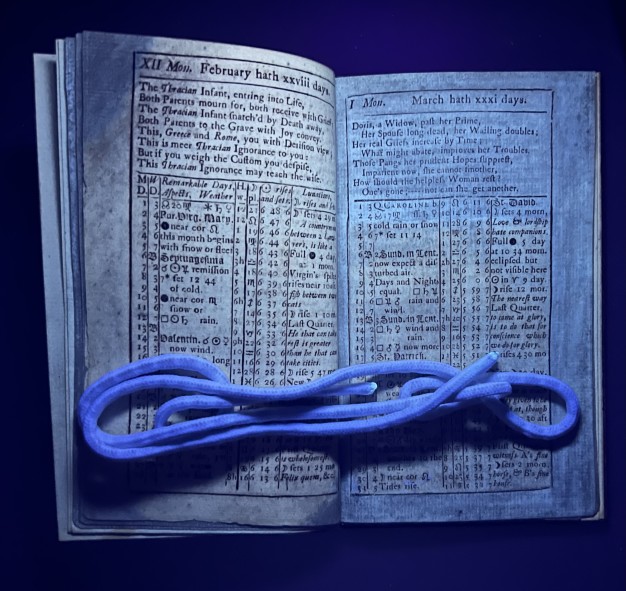From Rags to Riches: A Facsimile Restoration of Poor Richard’s Almanac
In 2021, the APS Library & Museum’s Dr. Franklin: Citizen Scientist exhibition featured a copy of the 1737 Poor Richard’s Almanac open to page 4, on which was printed a leaf of the “rattlesnake herb.” The plant’s Latin name is debatable, but Benjamin Franklin (under the nom de plume Richard Saunders) identified it as a type of goldenrod used by Indigenous peoples for medical purposes, including the treatment of rattlesnake bites. Franklin’s use of the leaf emphasizes three things: his appropriation and dissemination of Native American medical wisdom, his personal network of fellow scientists (his friend Joseph Breitnall first developed the means of printing leaves directly onto paper), and his entrepreneurial bent (in addition to publishing the very popular Poor Richard’s Almanac each year, Franklin used printed leaves as a way to create counterfeit-resistant colonial paper currency). This is the story of how I identified counterfeit elements within the almanac, including the top corners of the display pages!
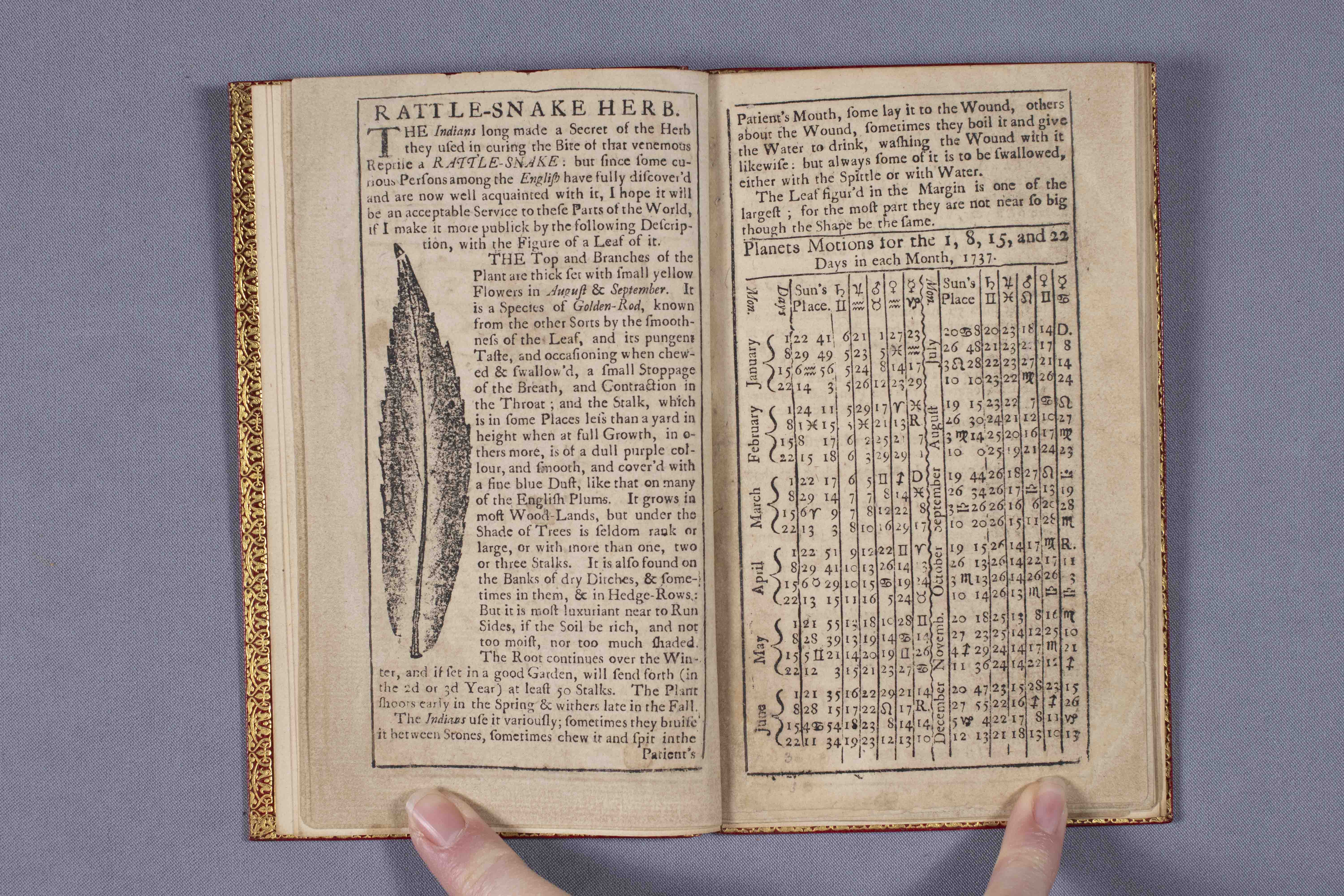
When first printed, the little almanac (a pamphlet of 12 leaves) was a cheap and entertaining calendar for the masses, stitched together with a loop or two of thread. It had no pretensions to grandeur. At some point in the late 19th or early 20th century, however, the APS’s display copy of Poor Richard was bound in red morocco leather, with tiny gilt lettering on its narrow spine and intricately tooled, wide turn-ins on the insides of the boards. Nestled within the gilt tooling at the bottom of the front board is a gold stamp reading “BOUND BY RIVIERE & SON.” Robert Riviere’s bindery was active in London from about 1840 to 1939, and its elegant and sturdy binding for the APS’s 1737 Poor Richard’s Almanac has kept the little pamphlet safe during at least a century of handling and exhibition.
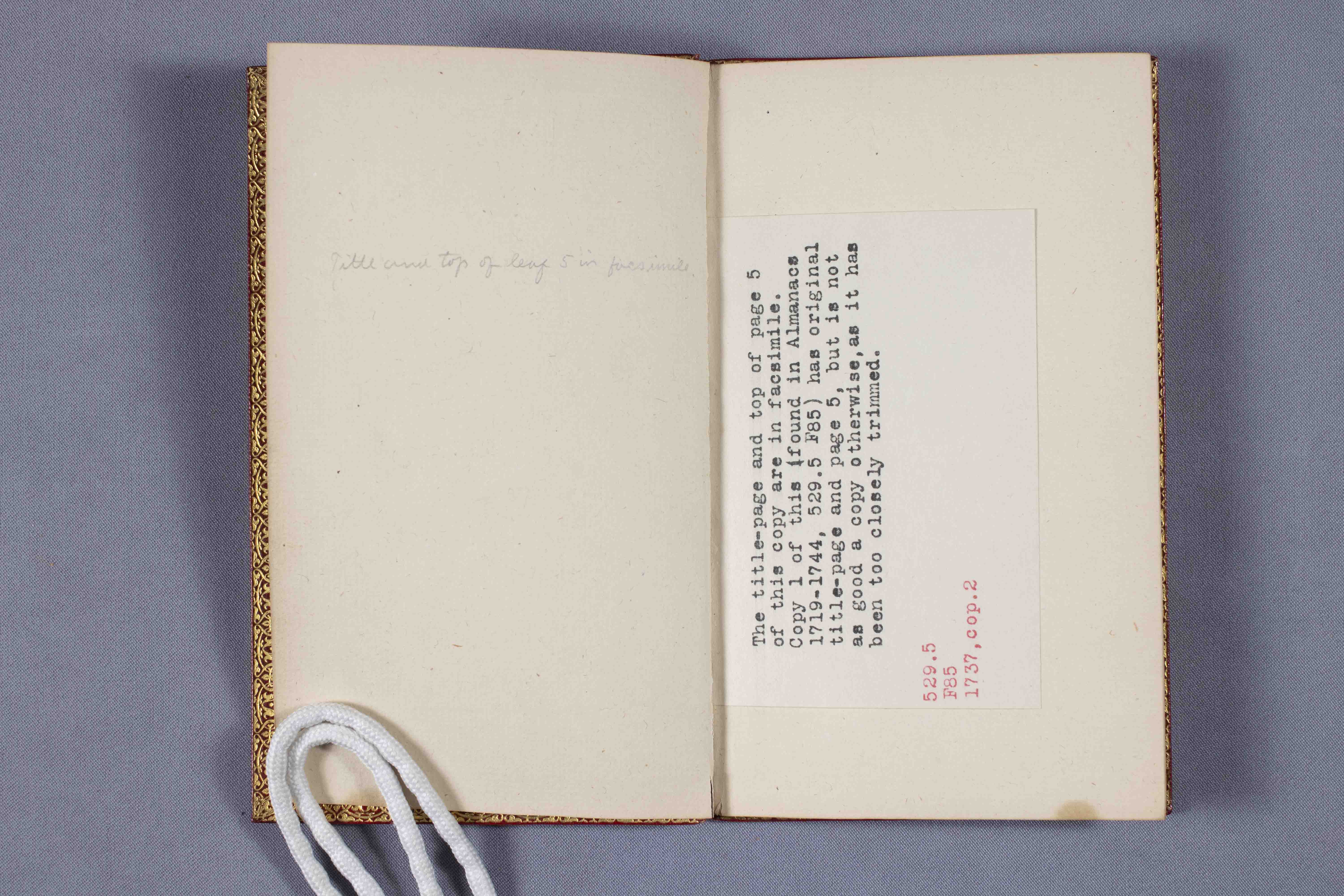
Because the book was in such good shape, I did not have to treat it prior to exhibition, and gave it only a cursory examination. Once it had been removed from its display case, however, I noticed two curious things about it. On the back of the first front flyleaf was a penciled inscription reading “Title and top of leaf 5 in facsimile.” A typewritten slip adhered to the second front flyleaf went even further: “The title-page and top of page 5 of this copy are in facsimile. Copy 1 of this (found in Almanacs 1719-1744, 529.5 F85) has original title-page and page 5, but is not as good a copy otherwise, as it has been too closely trimmed.”
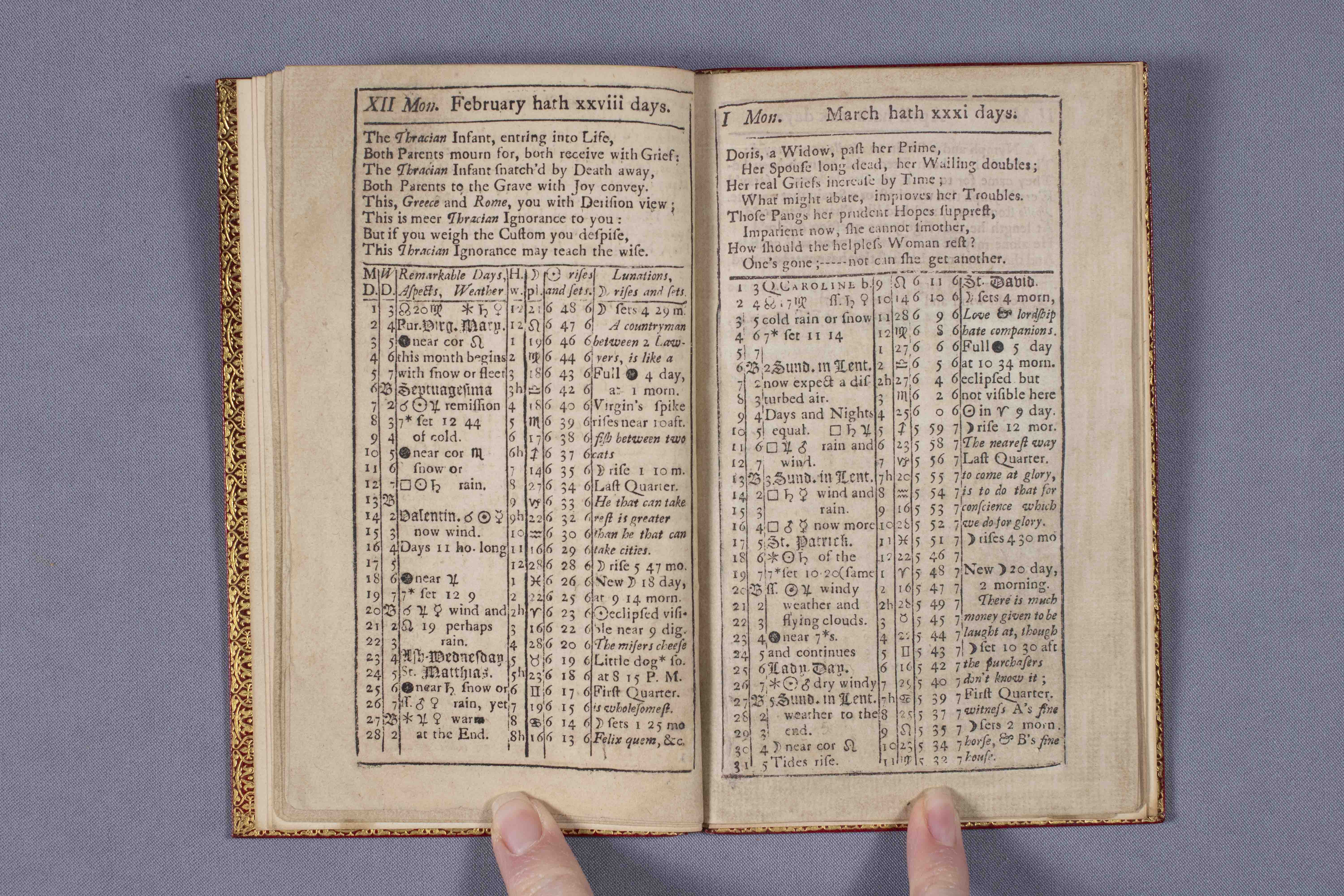
I was immediately fascinated. The book looked entirely intact and original! Were the title page and either leaf 5 or page 5 really facsimiles? I decided to investigate. Conservators have many means for spotting fakes and facsimiles, including analytical methods for dating pigments, fiber analysis to help date paper, and (in extreme cases) radio-carbon dating. For this mystery, however, I only needed a few basic tools: a microscope, a thin and flexible light source, and an ultraviolet or black light.
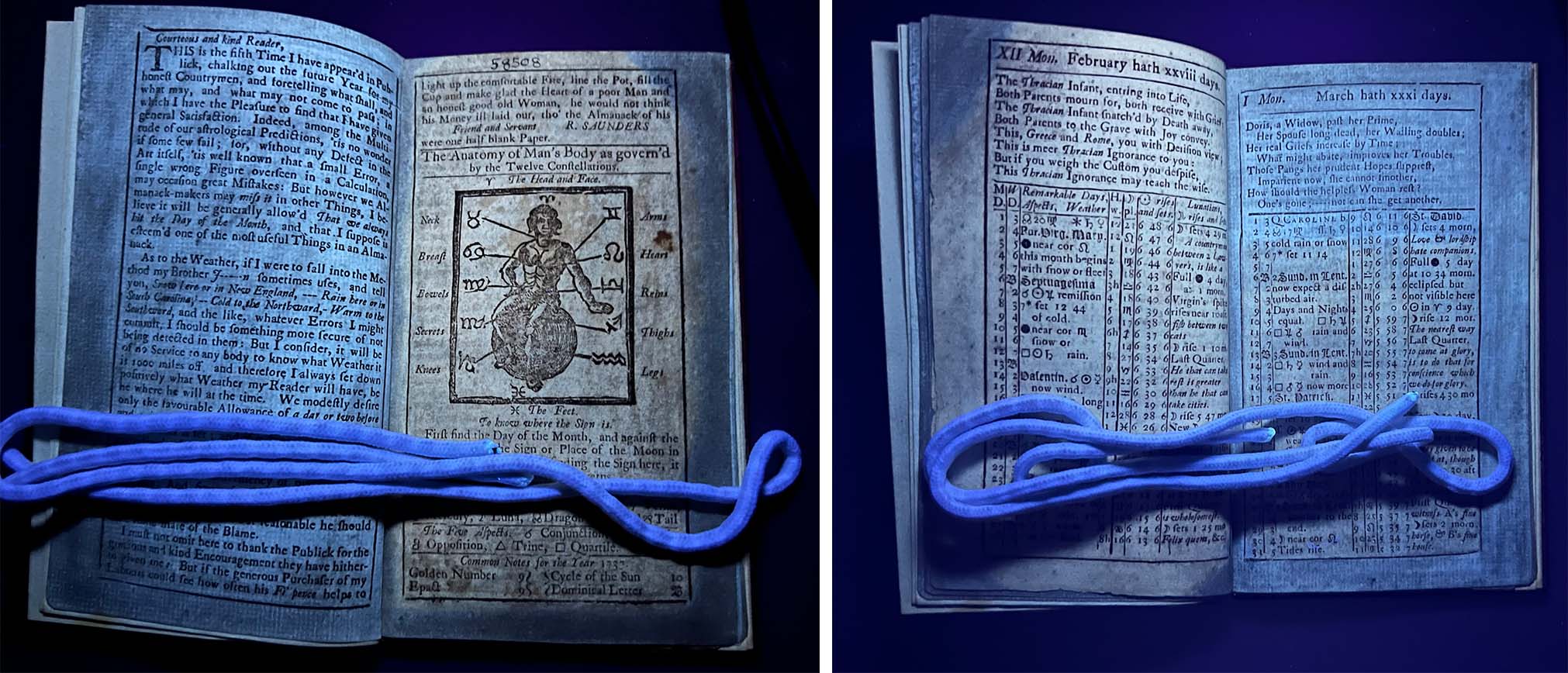
First, I wanted to determine whether page 5 or leaf 5 was the second facsimile. (If you find that confusing, know this: to book scholars, each piece of paper in a book is known as a leaf, and each leaf has two pages, a front and a back. Leaf 5, the fifth leaf of paper, would actually be pages 9 and 10—although Franklin did not number his pages.) By shining low-wave ultraviolet (UV) radiation on each leaf, I was quickly able to see that the first leaf and the top of the fifth leaf were different from the rest. Different materials fluoresce in different colors in UV. Some materials do not fluoresce, but absorb the UV radiation and appear black. In the 1737 Poor Richard’s Almanac, the original paper glowed slightly orange in UV, but the title leaf and the top of leaf 5 glowed blue-white (see the images directly above this paragraph). This confirms that these areas are different from the original paper. The old and new papers may have been sized or strengthened with different adhesives, such as animal glue for the older paper and starch for the newer paper. Surprisingly, most of the leaves also had bluish, UV-absorbing paper around their margins, especially at the corners. Had the corners and margins also been replaced with more recent paper?
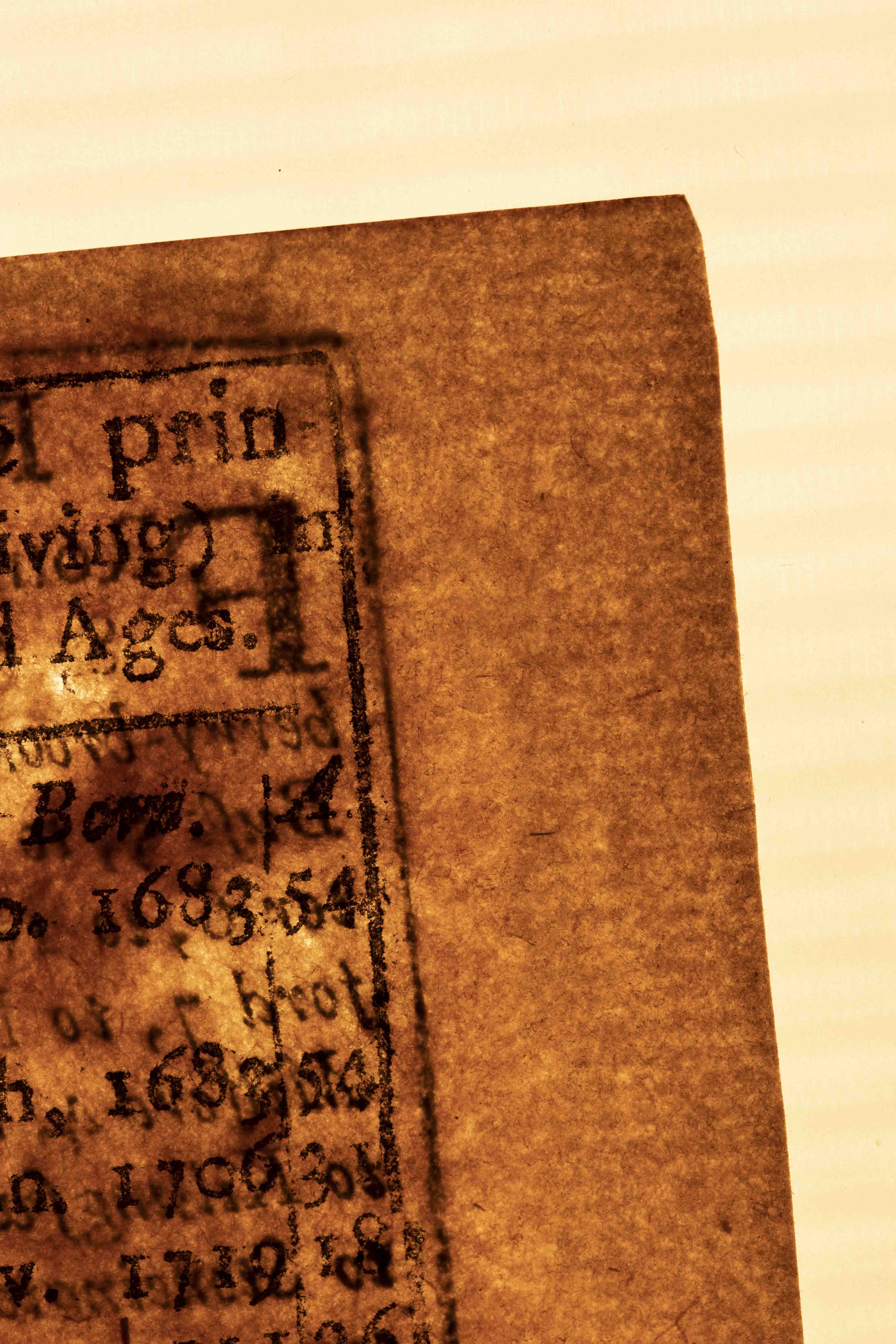
To find out more, I examined the book in transmitted light, or light passed through the paper (in this case, from a fiber-optic light sheet). In 1737, handmade paper always bore marks from the laid mold on which it was made. To make paper, historic papermakers dipped a mold and deckle (a framed screen of finely spaced wires) into a vat containing a slurry of linen fibers suspended in water. Once the mold was removed and shaken, the finely spaced wires allowed water to drain away from the linen fibers, creating a mat of new rag paper on top of the mold. The marks of the wires remained in the paper as thinner places, or laid lines, that can be seen in transmitted light.
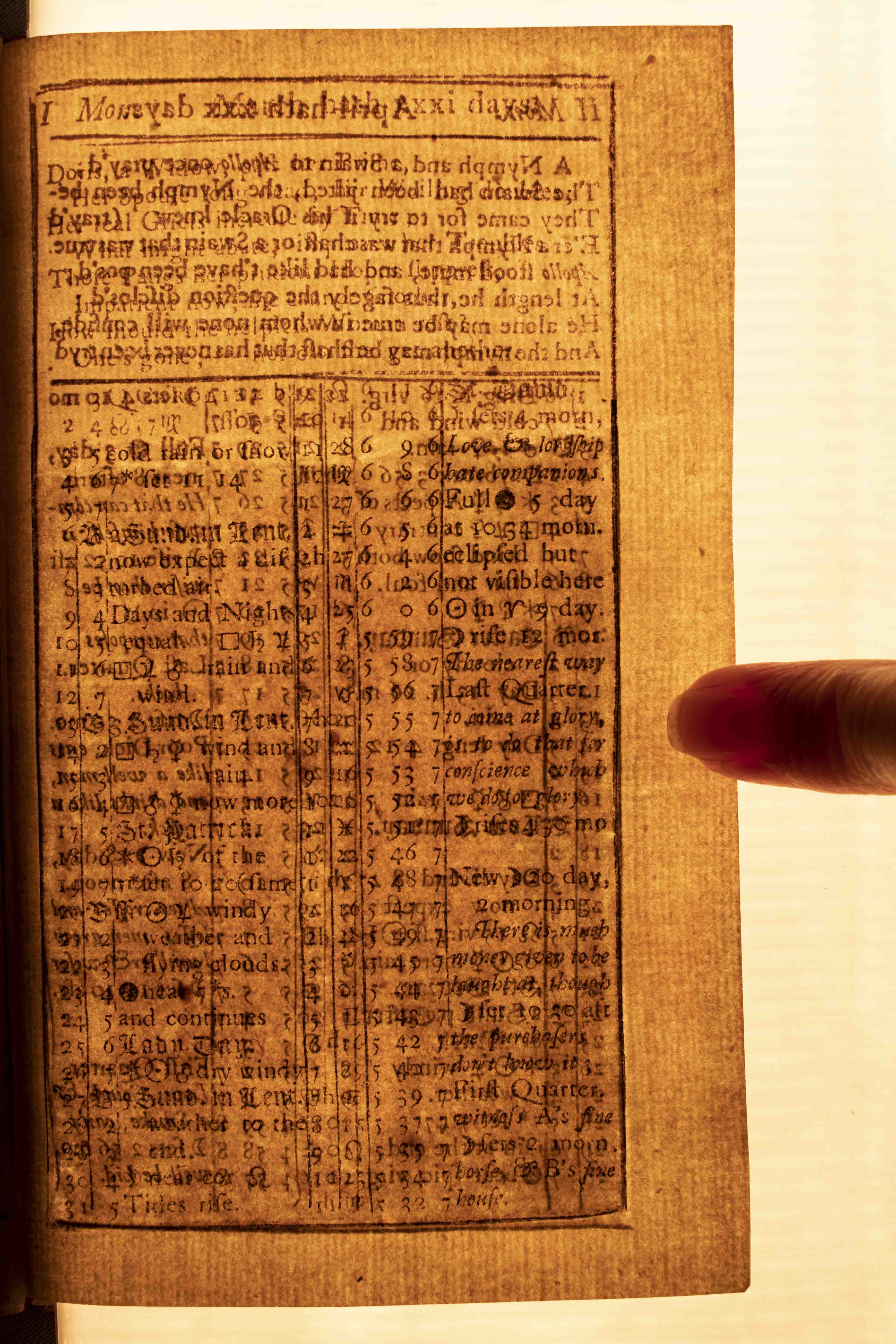
In Poor Richard’s Almanac, transmitted light showed that the laid lines in the original leaves were oriented horizontally, as one would expect in the case of a common duodecimo pamphlet. The coarseness of the handmade paper, however, made the laid lines difficult to see. They were obscured by linen fibers distributed unevenly, in thick clumps. By contrast, the new paper in the facsimile areas and margins had very clear laid lines, very even fiber distribution, and a more transparent appearance in transmitted light. And in the fifth leaf, the laid lines in the new paper were vertical rather than horizontal! Perhaps the restorer who attached the new fills and false margins was running low on matching paper, as the work is otherwise skillfully executed and the joins are barely perceptible. In most cases, only the difference in fiber distribution and color allowed me to see where the old and new papers were beveled with a knife, overlapped, and adhered together. The new paper margins explain why this copy of Poor Richard’s Almanac has relatively square, unworn corners—a rarity in heavily used pamphlets of this age.
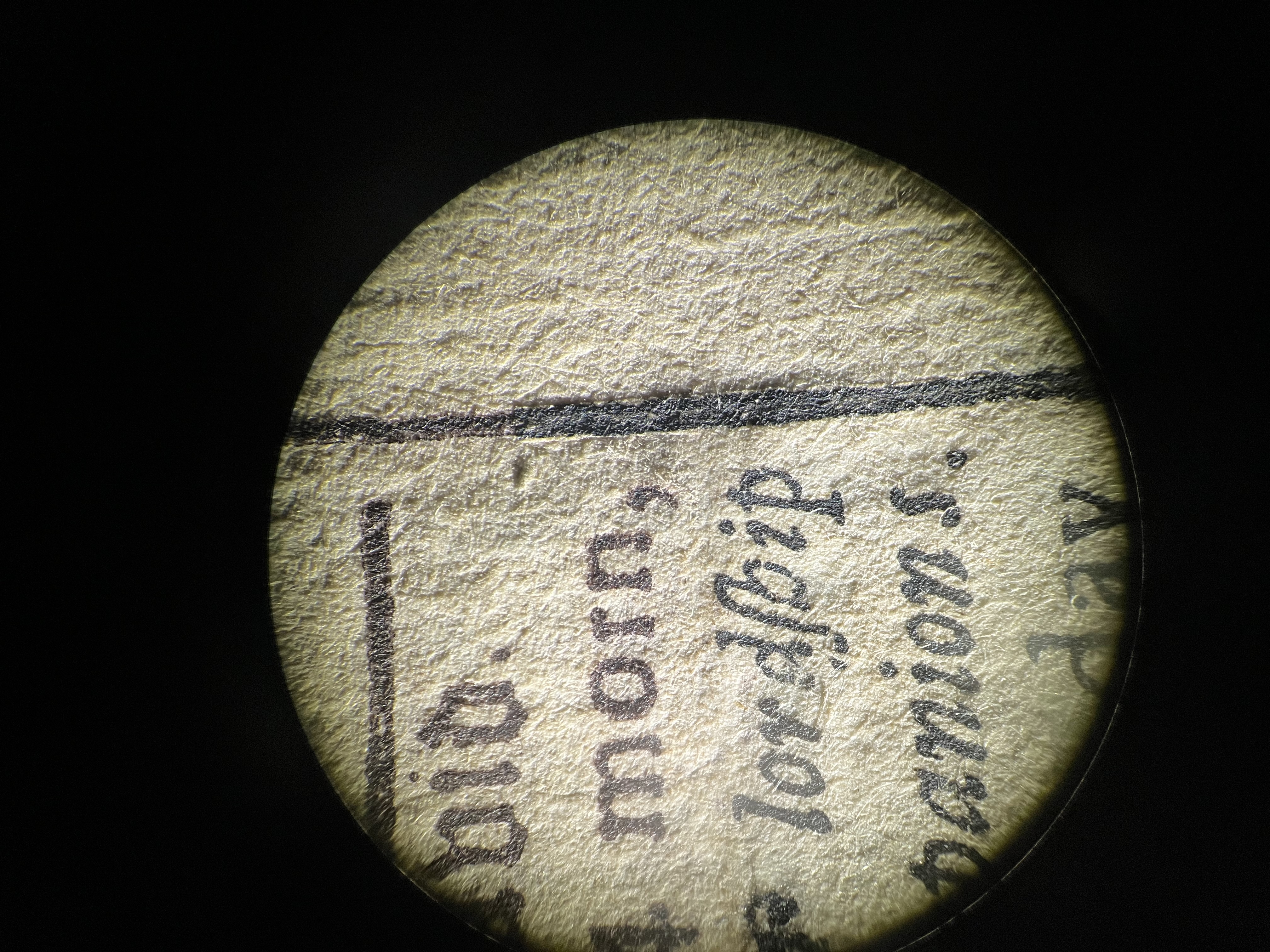
Finally, I examined the top and edges of leaf 5 under a stereomicroscope, which let me visualize the paper and printing inks at about 15 times their size. Raking light, or light streaming sideways across the surface of the paper, let me see faint bumps or seams where the old paper lies over the edges of the new fill. The main seams are horizontal, just above the word “lordship” in the 3rd line of the right column, and vertical, along the ruled line at the right of the page. The cut edge along this vertical rule, which ends in a tab that projects above the “lordship” line, can be seen under magnification. Everything above the horizontal seam is printed in a slightly purple ink on the new paper, while the original ink is a neutral black. Close examination of the edges of the page revealed that the bottom left edge of the leaf (including the “3” in “31”) is also a facsimile, printed in the same purplish black ink. Like Franklin, the facsimile maker printed the page with a relief or letterpress technique, possibly with a printing plate created through a photomechanical process. The title page appears to have been printed in a similar fashion, albeit with a more neutral black printing ink.
My various methods of examination led me to conclude that the title leaf and leaf 5 are not the only facsimiles in this thoroughly restored little volume, just the largest. Most of the outer leaf corners have been replaced, and with them losses in the text. In the top corners of pages 3-8, the missing letters or portions of letters appear to have been painted in with black watercolor. UV examination also revealed extensive losses at the bottom gutter edge of many leaves, which have been similarly filled with new paper and watercolor where necessary. In several of the outermost leaves, all of the margins have been replaced with new paper. While this may now be the “better” of the two APS copies of this almanac, it was once a very worn and tattered booklet, with many textual losses.
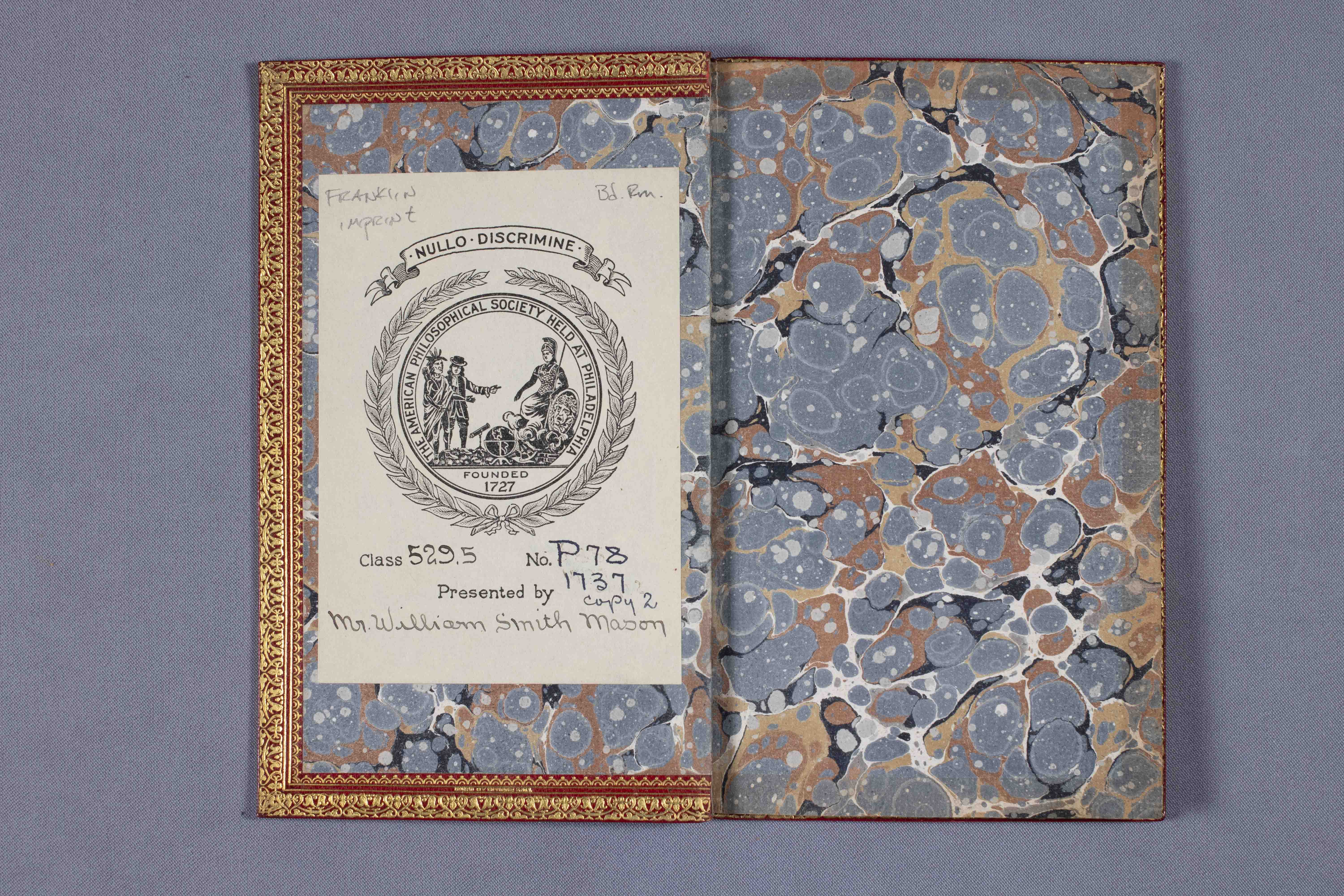
While the almanac’s restoration and facsimile work might have been performed by an unscrupulous dealer with the intent to deceive, it may instead have been carried out at the request of a former owner. The almanac’s elegant rebinding was almost certainly performed for APS Member William Smith Mason (1866-1961), a famous collector of Franklin materials. His efforts to beautify (and possibly to restore) the battered almanac were probably meant to honor Franklin and to unify the appearance of his extensive collection. Mason donated the richly bound almanac to the APS in June 1923, five years before he was elected to APS Membership. Whether Mason commissioned or was duped by the restoration and facsimile work is unclear, but the discreet pencil inscription on the first flyleaf suggests that the work did not escape notice after the book arrived at the APS. The handwriting appears to be that of Carol Rugh, the first bookbinder and restorer employed at the APS, who began her part-time work for the Society in 1935. One of her earliest jobs was to survey the volumes Mason had donated. (For more about the history of conservation at the APS, buy my book on the subject!)


